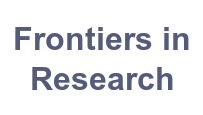Seeds of food sovereignty: AI, drones, and the fight against innovation Apartheid in Africa’s climate-smart agriculture
DOI:
https://doi.org/10.71350/30624533106Keywords:
Algorithmic justice, food sovereignty, dendered design, human agency, climate resilience, innovation apartheid, smallholder dignityAbstract
This groundbreaking study asks whether AI and drone technologies can help feed Africa’s future in a humane way, showing that they have the potential to make a big difference but are held back by systemic inequalities. The study document shows real benefits through a mixed-methods analysis: Kenyan smallholder yields went up by 28.7% and dietary diversity went up by 22% thanks to Apollo Agriculture’s credit-linked platform. South African orchards saved 35% on irrigation costs thanks to Aerobotics’ precision analytics. But these gains are still harvests of exclusion: 68% of resource-poor farmers can’t afford the costs (more than $200/ha), and digital literacy barriers (OR=0.42) take away people’s ability to act. Algorithmic betrayal hurts people who own degraded land (less than 10% of the gains), which keeps colonial legacies alive that take away the dignity of customary land stewards. Regulatory dissonance (Kenya’s 47-day drone permits shrinking crisis coverage by 41%) is an example of how bureaucratic indifference puts people’s lives at risk during climate shocks. It’s important to note that 78% of female farmers say that tools don’t work with the way they work, which shows gendered design violence. Three revolutions will lead to redemption: sociotechnical congruence that respects oral knowledge traditions, algorithms that are made with communities to avoid bias, and policy harmonization that puts smallholder sovereignty at the center. These technologies can only become seeds of food sovereignty instead of tools of division if they are designed to be fair, with governments paying for digital literacy programs for women, developers making voice-native interfaces, and donors paying for offline analytics. Without this moral reset, innovation could make the problems it promised to solve even worse, putting human dignity at risk on the climate frontier.
Downloads
References
Acemoglu, D., & Restrepo, P. (2022). Harnessing automation for a future that works. NBER Working Paper 30416.
Aerobotics. (n.d.). Our technology. Retrieved October 26, 2023, from https://www.aerobotics.com/technology
AGRA. (2023). Africa Agriculture Status Report 2023: Empowering Africa’s Food Systems for the Future. Alliance for a Green Revolution in Africa.
Apollo Agriculture. (n.d.). How it works. Retrieved October 26, 2023, from https://www.apolloagriculture.com/how-it-works
Aryal, J. P., Rahut, D. B., Maharjan, S., & Erenstein, O. (2020). Understanding factors associated with agricultural mechanization: A Bangladesh case. World Development Perspectives, 19, 100235. https://doi.org/10.1016/j.wdp.2020.100235
Beillouin, D., Corbeels, M., Demenois, J., Berre, D., Boyer, A., Fallot, A., ... & Wery, J. (2021). A global dataset for the projected impacts of climate change on major crops. Scientific Data, 8(1), 249. https://doi.org/10.1038/s41597-021-01029-z
Braun, V., & Clarke, V. (2006). Using thematic analysis in psychology. Qualitative Research in Psychology, *3*(2), 77–101. https://doi.org/10.1191/1478088706qp063oa
Bronson, K. (2019). Smart farming: Including rights holders for responsible agricultural innovation. Technology Innovation Management Review, 9(2), 7–14.
CABI. (2020). Digital drones for agriculture: Use, barriers and opportunities in East Africa. CABI Digital Library Report. https://doi.org/10.1079/CABICOMM-62-8160
Carbonell, I. M. (2016). The ethics of big data in agriculture. Internet Policy Review, 5(1). https://doi.org/10.14763/2016.1.405
Chambers, R., & Conway, G. (1992). Sustainable rural livelihoods: Practical concepts for the 21st century. IDS Discussion Paper 296.
Cole, S. A., Karing, A., & Sahn, D. E. (2022). Using machine learning and satellite imagery to target inputs: Experimental evidence from smallholder farmers in Kenya. Working Paper.
Crépin, A.-S., Biggs, R., Polasky, S., Troell, M., & de Zeeuw, A. (2012). Regime shifts and management. Ecological Economics, *84*, 15–22. https://doi.org/10.1016/j.ecolecon.2012.09.003
FAO. (2013). Climate-Smart Agriculture Sourcebook. Food and Agriculture Organization of the United Nations.
FAO, IFAD, UNICEF, WFP, & WHO. (2021). The State of Food Security and Nutrition in the World 2021. Transforming food systems for food security, improved nutrition and affordable healthy diets for all. Food and Agriculture Organization of the United Nations. https://doi.org/10.4060/cb4474en
Foster, C., & Heeks, R. (2013). Innovation and scaling of ICT for the bottom-of-the-pyramid. Journal of Information Technology, 28(4), 296-315. https://doi.org/10.1057/jit.2013.19
GSMA. (2022). The Mobile Gender Gap Report 2022. GSM Association. https://www.gsma.com/r/mobile-gender-gap/
Glover, D. et al. (2019). The politics of seed in Africa’s Green Revolution. Routledge.
IPCC. (2022). Climate Change 2022: Impacts, Adaptation and Vulnerability. Cambridge University Press.
Headey, D., Hirvonen, K., & Hoddinott, J. (2020). Animal Sourced Foods and Child Stunting. American Journal of Agricultural Economics, 102(3), 825–843. https://doi.org/10.1002/ajae.12047
Jakku, E., Taylor, B., Fleming, A., Mason, C., Fielke, S., Sounness, C., & Thorburn, P. (2019). “If they don’t tell us what they do with it, why would we trust them?” Trust, transparency and benefit-sharing in Smart Farming. *NJAS - Wageningen Journal of Life Sciences, 90-91*, 100285. https://doi.org/10.1016/j.njas.2018.11.002
Kamilaris, A., Kartakoullis, A., & Prenafeta-Boldú, F. X. (2017). A review on the practice of big data analysis in agriculture. Computers and Electronics in Agriculture, 143, 23–37. https://doi.org/10.1016/j.compag.2017.09.037
Klerkx, L., Jakku, E., & Labarthe, P. (2019). A review of social science on digital agriculture, smart farming and agriculture 4.0: New contributions and a future research agenda. *NJAS - Wageningen Journal of Life Sciences, 90-91*, 100315. https://doi.org/10.1016/j.njas.2019.100315
Krell, N. T., Giroux, S. A., Guido, Z., Hannah, C., Lopus, S. E., Caylor, K. K., & Evans, T. P. (2021). Smallholder farmers’ use of mobile phone services in central Kenya. Climate and Development, 13(3), 215-227. https://doi.org/10.1080/17565529.2020.1740457
Li, T. M. (2007). The will to improve: Governmentality, development, and the practice of politics. Duke University Press.
Lipper, L., Thornton, P., Campbell, B. M., Baedeker, T., Braimoh, A., Bwalya, M., ... & Torquebiau, E. F. (2014). Climate-smart agriculture for food security. Nature Climate Change, 4(12), 1068–1072. https://doi.org/10.1038/nclimate2437
Ostrom, E. (2009). A general framework for analyzing sustainability of social-ecological systems. Science, *325*(5939), 419–422. https://doi.org/10.1126/science.1172133
Radoglou-Grammatikis, P., Sarigiannidis, P., Lagkas, T., & Moscholios, I. (2020). A compilation of UAV applications for precision agriculture. Computer Networks, 172, 107148. https://doi.org/10.1016/j.comnet.2020.107148
Robeyns, I. (2017). Wellbeing, freedom and social justice: The capability approach re-examined. Open Book Publishers.
Rogers, E. M. (2003). Diffusion of innovations (5th ed.). Free Press.
Rosenstock, T. S., Lamanna, C., Chesterman, S., Bell, P., Arslan, A., Richards, M., ... & Corner-Dolloff, C. (2016). The scientific basis of climate-smart agriculture: A systematic review protocol. CCAFS Working Paper no. 138. CGIAR Research Program on Climate Change, Agriculture and Food Security (CCAFS).
Sen, A. (1999). Development as freedom. Oxford University Press.
Steenwerth, K. L., Hodson, A. K., Bloom, A. J., Carter, M. R., Cattaneo, A., Chartres, C. J., ... & Wheeler, T. R. (2014). Climate-smart agriculture global research agenda: Scientific basis for action. Agriculture & Food Security, 3(1), 11. https://doi.org/10.1186/2048-7010-3-11
Taylor, L. & Schroeder, R. (2015). Is bigger better? The emergence of big data as a tool for development. Information Technology for Development, 21(3), 305–324.
Tsolakis, N., Bechtsis, D., & Bochtis, D. (2021). Agros: A robot operating system based emancipation tool for the digitization of agriculture. Artificial Intelligence in Agriculture, 5, 155–167. https://doi.org/10.1016/j.aiia.2021.09.002
van Klompenburg, T., Kassahun, A., & Catal, C. (2020). Crop yield prediction using machine learning: A systematic literature review. Computers and Electronics in Agriculture, 177, 105709. https://doi.org/10.1016/j.compag.2020.105709
Vogel, I. (2012). Review of the use of ‘Theory of Change’ in international development. DFID.
Wolfert, S., Ge, L., Verdouw, C., & Bogaardt, M. J. (2017). Big data in smart farming – A review. Agricultural Systems, 153, 69–80. https://doi.org/10.1016/j.agsy.2017.01.023
Wyche, S., & Steinfield, C. (2016). Why don’t farmers use cell phones to access market prices? Technology affordances and barriers to market information services adoption in rural Kenya. Information Technology for Development, 22(2), 320-333. https://doi.org/10.1080/02681102.2015.1048184
Zhang, C., & Kovacs, J. M. (2012). The application of small unmanned aerial systems for precision agriculture: A review. Precision Agriculture, 13(6), 693–712. https://doi.org/10.1007/s11119-012-9274-5
Zougmoré, R., Partey, S., Ouédraogo, M., Omitoyin, B., Thomas, T., Ayantunde, A., ... & Jalloh, A. (2016). Toward climate-smart agriculture in West Africa: A review of climate change impacts, adaptation strategies and policy developments for the livestock, fishery and crop production sectors. Agriculture & Food Security, 5(1), 26. https://doi.org/10.1186/s40066-016-0075-3
Downloads
Published
How to Cite
Issue
Section
License
Copyright (c) 2025 Frontiers in Research

This work is licensed under a Creative Commons Attribution 4.0 International License.








